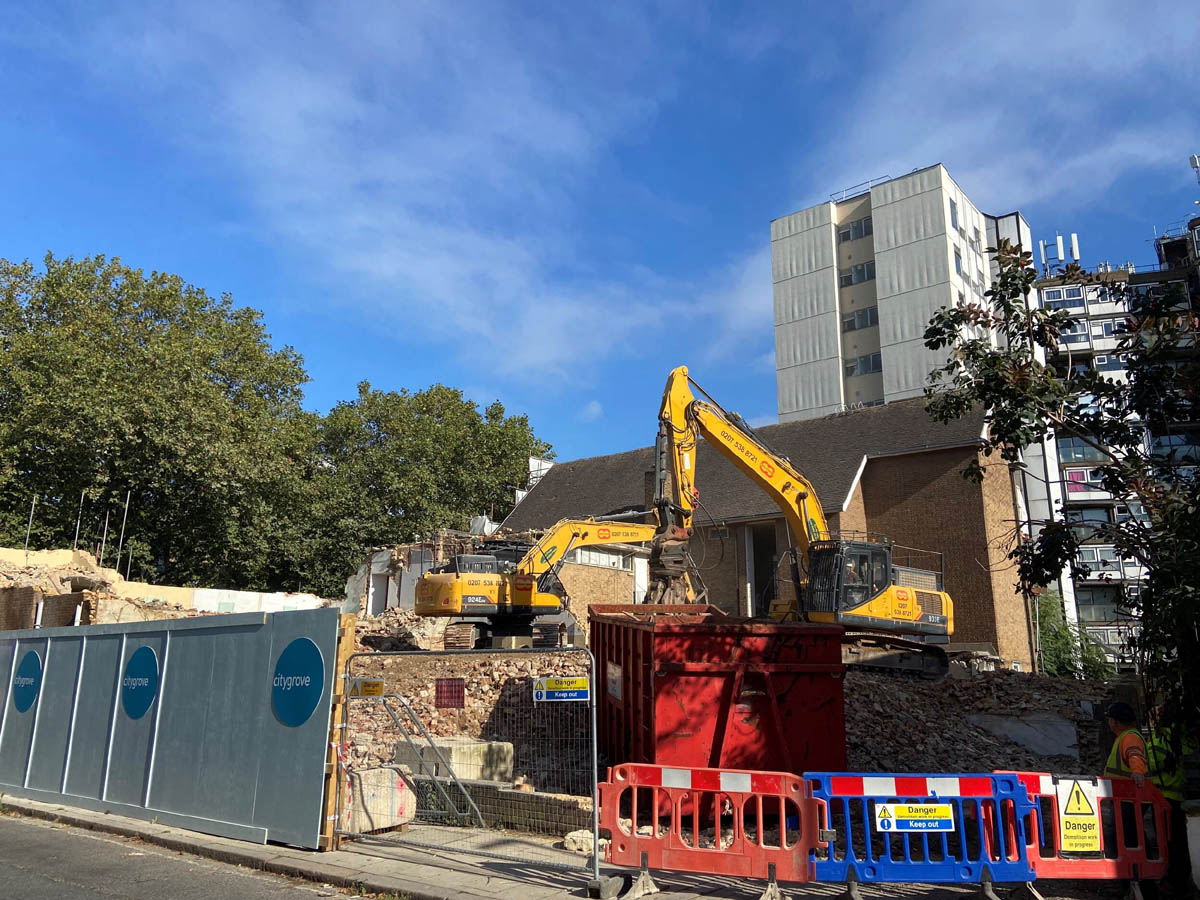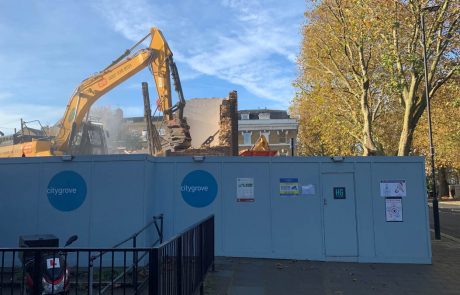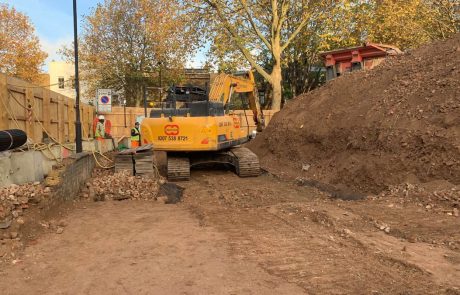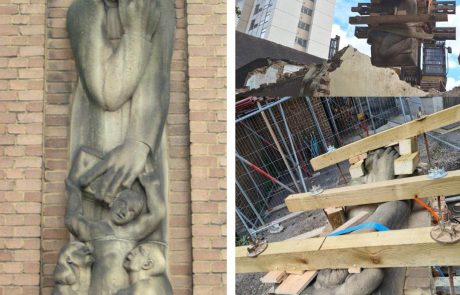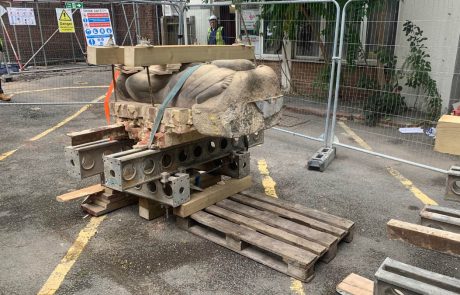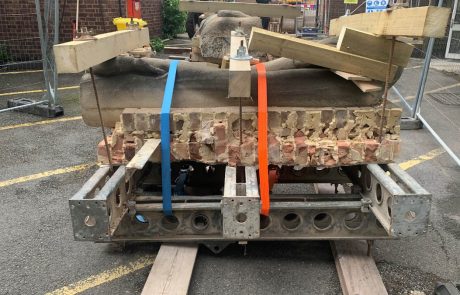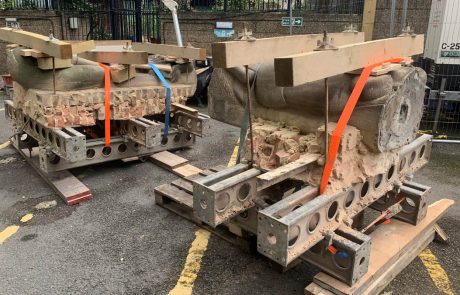Developer: Citygrove
Architect: Aros
Duration: 10 weeks
Principal Contractor: HG Construction
Value: £240k
Location: London SE1
Clifford Devlin was appointed by Principal Contractor, HG Construction, to carry out the demolition and asbestos removal of the Lambeth Mission and St. Mary’s Church. Located on the corner of Lambeth Walk, close to Waterloo Station, the demolition of the 1950’s church complex will make-way for a new build, mixed use development.
As well as a new church complex complete with the function rooms and a café at ground floor level, the development will include an 11-storey, 137-bed Premier Inn hotel, a bar, a restaurant and two residential dwellings.
The building was stripped of all non-structural fixtures, fittings and furniture including a number of wooden benches, chairs and cupboards. Our Environmental team identified the sustainability potential of these good-quality items which could be re-used rather than recycled and donated to a charity to generate added social value. We partnered with a local organisation, Sponsoring Academic And Medical Access in Gambia (SAAMA), which arranged for the items to be collected and shipped to grateful recipients in the West African country.
The Church was fully scaffolded and clad in a monarflex sheeting. The building’s high pitched roof and structure was carefully deconstructed manually by operatives working from the scaffold. Following structural demolition the ground floor slab and foundations were excavated and the site levelled. Over 1800 tonnes of hardcore arisings were crushed on site to 62F grade and used to lay the piling mat for the build phase.
The deconstruction and groundworks phases were subject to an archaeological watching brief by Pre-Construct Archaeology Limited and the careful removal of a time capsule as well as a heritage sculpture ‘The Word’ by Edward Bainbridge Copnall which had been carved from bomb-damaged stone in 1951 and mounted into the church’s wall following the destruction of the original building by a V2 rocket in 1945. The sculpture, which will be displayed on the new development, was carefully removed by operatives and enclosed in a protective timber frame for safe storage.
The project was undertaken in close proximity to occupied residential buildings requiring strict environmental controls to be implemented. The building was deconstructed manually to reduce noise and dust emissions were supressed by the scaffold enclosure and use of water spray.
Quote:
"Clifford Devlin’s team were very proactive and collaborative in their approach to devising solutions to overcome a number of challenges and unknowns. This development is also tasked with achieving BREEAM Excellent rating and their ability to contribute to demonstrating sustainability through high rates of re-use and recycling of demolition arisings as well as salvaging heritage items to be used in the new build was particularly impressive.”
John Gordon, Project Manager, HG Construction


